Dental Visits For Children: How To Make It Fruitful?
Taking your kids to the dentist can be fun and fruitful if you plan it well from the beginning. In reality many kids do not like going to the dental clinic because of previous unpleasant experience. This is mainly because most of them only visit the dentist when they are in pain thus requires operative treatment or urgent tooth extractions at their first visit. We are all aware that first impressions can be lasting ones and usually the traumatic experience in the dental clinic will be treasured longer than the sweet experience. In order to avoid this and subsequent untoward perception toward dentistry, dental visit for kids, especially the first one must be planned so as to make the visit pleasant and kids eager to come back .
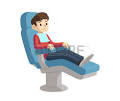
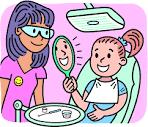
Here are some tips to fruitful dental visit:
-
Plan for Early Dental Visit
Always start your kid’s dental visit at an early age soon as the teeth erupt in the mouth or by 1 year of age. Early dental check-up enables the healthcare professionals and parents to discuss ways to nurture good oral health before the onset of any disease. Another benefit is to familiarize the small kid to the dental environment before the kid has dental caries or dental pain and refuses treatment in unfamiliar environment.
- Regular Appointment
Follow appointment given by the dentist regularly. This is necessary to:
- monitor oral growth and development
- prevent tooth decay (dental caries) or gum disease
- monitor self care
Regular dental visit should be at every 6 months of duration. During this time, any new decay which is still small will be detected and can be quickly restored without much discomfort. Further familiarization with the dental environment and dental personnel may be improved and good oral habit can be reinforced.
- Parent to prepare kids with correct information
Pre visit information by parents is important in order to prepare the kids psychologically about the dental clinic and to provide positive input about the dental treatment. If they have seen any movies or jokes about unpleasant dentistry before, then proper and right explanation is necessary to prevent inappropriate and wrong information to the kids.
Taking your child to the right clinic
The environment at the clinic also plays an important role in making your kids visit to the clinic a fruitful one. If you can, bring your kid to a dentist who is familiar with treating kids. Kid- friendly dentist will usually emphasizes on having a clinic set-up which is kid-friendly.
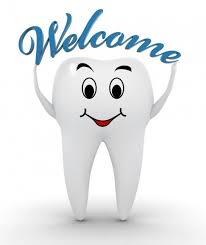
The ideal kid friendly clinic set-up has the following feature;
- Friendly Staffs at the Counter
Staffs at the counter should be friendly and has good attitude towards kids to take special care of them. The staffs should greet them with smiley and welcoming faces to make the kid feels safe and comfortable in the new surroundings.
At the counter, in the waiting room, it is also good to have kid’s corner for them to play, do colouring or reading while waiting their turn. This is to divert their focus and entertain them so that they feel relax especially in a busy practice. Pictures of frightening medical and dental diseases or complication of treatment and disease that might seem to threaten kids shouldn’t be placed on the wall.
- Child -Friendly Dental Surgery
Wherever possible the surgery environment should be kid friendly. Bright decorations and good lighting go a long way to making a positive first impression. The surgery should also be well ventilated so that it doesn’t smell strongly of antiseptics and solvents that will make the kid become more apprehensive. As much of the equipment as possible should be kept hidden but easily accessible to reduce fear to the kid when seeing something uncommon. Other than these, attempt must be made to reduce waiting time at the waiting room. Long waiting time may increase anxiousness and fear to the kid.
For new young kids ,they should preferably be greeted by the dentist in the waiting area, and allow to enter the surgery with mother close at hand. Most kids feel more reassured and confident when their parents are with them at the surgery room. After a few visits, the presence of parent in the surgery can be considered. If their presences increase the kid’s cooperation at treatment then they may stay or vice versa.
Some tips to the Dentist for a kid-friendly clinic
-
Ice breaking with non dental topics
Preliminary chat with non dental topics with the kid and parents is useful in order to assess the kid’s emotion and to let them settle into clinical environment. Casual chat such as praising the blouse/ shirt, asking the kid’s pet or favourite TV’s programme will build good dentist – kid relationship. After the kid feel more confident, then the dentist can start asking with simple open question such as how are you/ how are your teeth/ are you having any problem? Dentist should be a good listener to get more information such as what are their major concern and their expectation. Remember eye contact is very important, in particular at a first meeting. Good communication will also include non verbal reaction such as facial expression, show of empathy and minimal body contact.
- Introduce dental instrument and treatment with Tell – Show – Do
During examination and treatment, if a young kid refused to sit on their own, he/she should be allowed to sit on the parent’s lap so to allow the kid feel more secure and confident. The dentist should explain to the kid what procedure is to be done and to show the instruments that will be used.
This method is called tell- show and do technique and the purpose is to reduce uncertainty and reduce anxiety.
Tell: explanation of procedures at the right age/ educational level which uses proper kid’s language/ term. For example change the word dental drill to electric brush, radiograph as tooth picture, suction tip as vacuum tip and etc.
Show: demonstrate the instrument and procedure to them or to parents wisely
Do: following on to undertake the task with praises and explanation
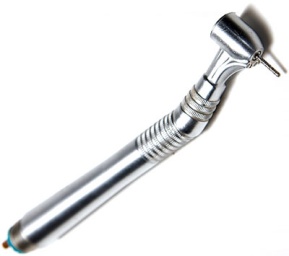
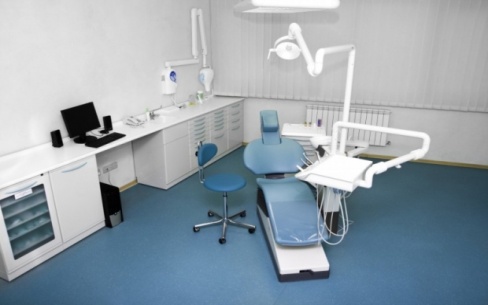
Usually after tell, show and do session, simple treatment such as dental charting, cleaning with prophylaxis brush, preventive therapy or minimal filling can commence.
-
Familiarization with Acclimatization and Modelling
If the child is very anxious at the first visit and they are not in pain, acclimatization programme can be introduced by gradually introducing the child to the dental environment and dental procedures in several sessions. This will include tell-show –do method, modelling with real model of other positive patient/ video of pleasant dental treatment and desensitization technique. The acclimatization technique allows kids to explore and learn more about the clinic environment, build good relationship with the dentist and her/his staff and to gain confident in dental treatment. The parents need to be tolerant because this will involve several visits before the proper treatment starts.
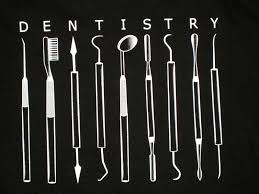
Some instruments use for restoring decayed teeth
-
Discuss the best treatment options for kid with parent
If the kid comes to clinic with toothache and other symptoms, the main focus is to alleviate the problem. Discussion with parents is important about the dental problem, present sign and symptom, level of cooperation of the patient and treatment options. Management that can be done will depend on the complexity of treatment and level of cooperation. Treatment plan should be agreed upon between dentist and parents to get the best treatment option for the child.
- Emergency dental treatment
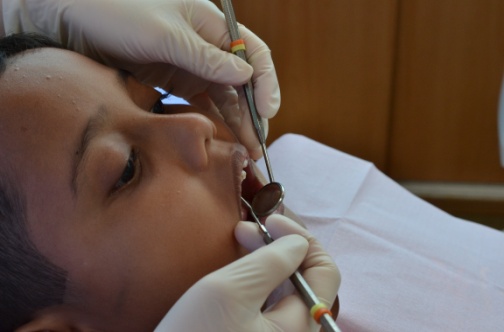
In certain circumstances, some kids come to the dental clinic with symptoms that need urgent dental treatment.
Immediate treatment that should be done to treat the symptom are such as prescribing medicine, treating the dental pulp, teeth extraction, stitching injured tissue, splinting displaced teeth and incision and drainage of pus. It is not easy to perform these procedures in young and uncooperative children.
Emergency treatment is necessary to reduce pain, control infection and manage bleeding from mucosal and dental injuries.
For simple emergency treatment, the dentist can perform the procedure under local anaesthesia in the dental clinic. Physical restraint by parents some time need to be used together to help the dentist to carry out the task and to prevent further injury to patients and operators.
In cases where the kids are very young and anxious or requires multiple dental visit or when the treatment required is complex, then the option of treatment under GA is the best for them.
- Praises and Reward
Dentist and assistant should praise the kid after a successful procedure such as examination and charting, prophylaxis, scaling, filling or extraction has been performed. This will increase the confident level of the kid and hopefully will encourage him/her to repeat the good behavior again in the next visit. Small gift like cartoon sticker, toothbrush or balloon will make them happy and motivate them to come back to the dental clinic.
Some stickers that kid might like.
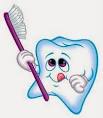

| Last Reviewed | : | 28 September 2016 |
| Writer | : | Dr. Aminah bt. Marsom |
| Accreditor | : | Dr. Laila bt. Abd. Jalil |







